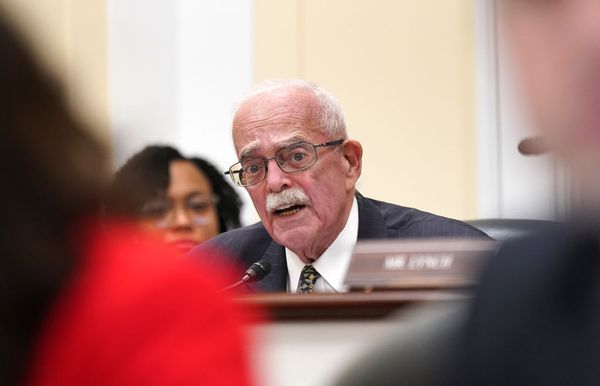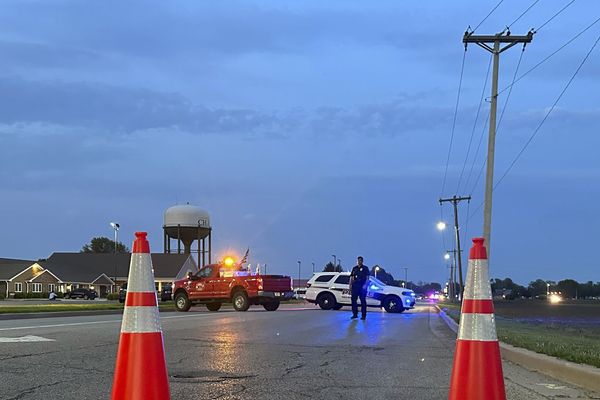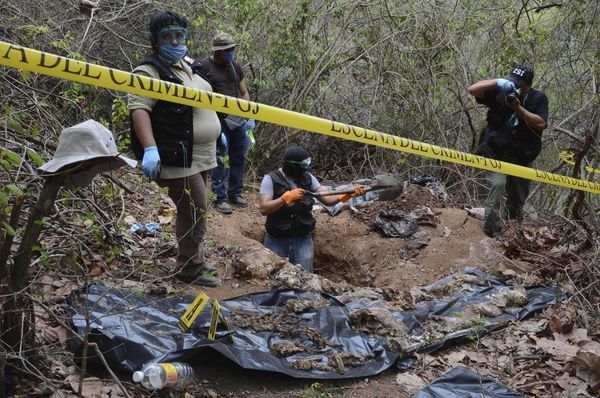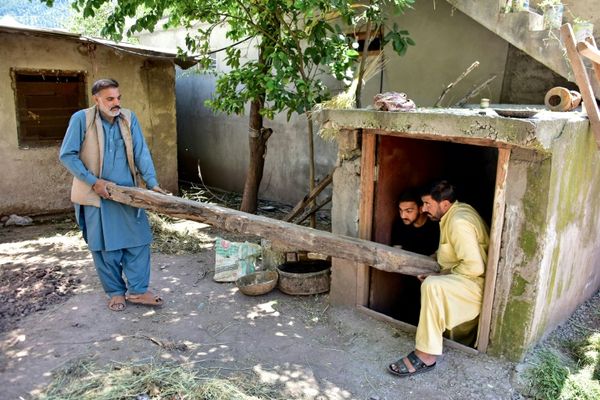On his way back home from college, Mohan, a student from a village near Thippagondanahalli (T.G. Halli), stands near a bridge with his friends. All of them are captivated by the fury of nature, which has brought a “dead” river back to life. “I have never seen so much water in this river,” Mohan exclaims about the fast-flowing Arkavathy. As they watch, a group of fishermen from Mandya arrive in an auto-rickshaw to add to their catch.
The T.G. Halli reservoir, located at the confluence of the Arkavathy and Kumudavathi rivers, was once the source of piped water for Bengaluru.
Hours later, yet another yellow alert is issued for Bengaluru, just 40 km away. The recent bouts of rainfall have already battered Bengaluru and its surrounding districts. Roads, highways and tech parks are inundated, homes are flooded, critical infrastructure such as power and water pumping stations are waterlogged, and lakes are overflowing.
In the last few years, many parts of Karnataka have received excess rainfall during the monsoon season and there have been aberrations in rainfall patterns in traditionally dry regions. This year, the State registered only a 21% departure from the normal between June and August. But Bengaluru Urban and Rural, Ramanagara, Chikkaballapur, Kolar and Tumakuru are among the 11 districts that have received large excess rainfall, with departures as high as 230%.
According to the Bruhat Bengaluru Mahanagara Palike, the monsoon rain this year is the second highest that Bengaluru has seen since 1971. Met Department officials say the rainfall of September 4 (131.6 mm) was the third highest single-day amount that Bengaluru has ever recorded.
In Ramanagara district, thousands of residents living in the low-lying area of Ramanagara and Channapatna towns have been struggling to cope with torrential rainfall, with several residential areas inundated. Everyone agrees that flooding in this drought-prone region is “unprecedented”.
Overflowing water bodies
Rivers which were reduced to insignificant streams in recent times have suddenly sprung back to life now, say residents in villages around the city. The rainfall has caused water bodies to flow beyond their boundaries. The intricately connected lake system in Bengaluru, which has seen major disruptions over the years with the proliferation of infrastructure and housing projects and industries, also saw many lakes breach bunds.
At Metipalya in Bengaluru South taluk, Muttaiah, a 74-year-old farmer, points to the gushing waters of the Arkavathy river, a tributary of the Cauvery. “This is of no use to us,” he says. “Earlier, we could use water from this river for drinking and washing clothes. We did not even have to boil it. Now, we cannot even use it for agriculture as it contains chemicals discharged by industries.” No one has bothered about the river, he rues.
At a roadside hotel, Kallesh, 40, is busy making chapatis. He says the river water carries “rainbow hues” due to chemical pollution. “It is known as a perennial river,” he says. “But what is this water?”
Outside a temple near the river, people point to the irony. “Excess rain has ruined almost all crops. The river water is essentially chemical water. We are able to grow very little now. People from other areas used to come to fetch drinking water from here. Today, the same people who live just 2-3 km away come to buy drinking water for ₹5 a can, drawn from a borewell close to the river,” says Rangaiah, 65. “Nothing has been done so that we can benefit from the river though it has come back to life after 30 years,” says Kiriyappa, 92.
In Ramanagara district, most of the 1,490 lakes and other water bodies have been overflowing. Some have even breached their bunds. Major rivers such as Arkavathy and Kanva have been flowing to the brim.
Guruprasad, a resident of Arkeshwara colony, says, “After Bakshikere, which is located close to the city, breached its bunds, low-lying areas were inundated. The water destroyed walls and gushed inside the houses. It even damaged the shutters of shops. Cars, autos and bikes were floating in the water. It took days for the people to clear the silt that has entered their homes.”
Syed Sadique’s silk reeling unit in Mohammadia Nagar was completely flooded. He is still trying to process the magnitude of the floods. “I have never seen anything like this. All the raw materials and machinery were submerged,” he says.
According to an assessment by the district administration, flooding in Ramanagara and Channapatna towns has affected more than 2,200 houses. Over 200 houses are damaged and over 1,100 hectares of agricultural and horticulture lands are flooded.
Chetahan Gowda, a resident of Kanva Colony, says, “Most of the streams that eventually join rivers have regained life. During the recent flooding, I visited many places in and around Ramanagara and Channapatna. I saw Seetha Thore, Shanubhoganahalli and other streams flowing with full force. These streams also flooded agricultural land. Kanva, which usually dries up during the summer season, has regained life.”

Part of the trouble in Ramanagara is a project aimed at ameliorating dry conditions. Avinash Menon Rajendran, Deputy Commissioner of Ramangara, says, “In Channapatna taluk, the lakes that had dried up started receiving water supply from the lift irrigation system. Lakes have been receiving water since 2014 and the agricultural sector has benefited a lot over the years. This year, even before the onset of monsoon, most of the lakes were full. When it rained heavily last week, the water overflowed. More than 90% of the 102 lakes that are spread over 100 acres each were overflowing in the district.”
Rajendran says heavy rainfall in neighbouring districts such as Bengaluru Urban and Bengaluru Rural and the release of water from reservoirs increased the flow. A few days ago, Manchanbele dam started receiving over 4,000 cusecs of water from the T.G. Halli reservoir. The water-holding capacity of Manchanbele is one-third of the T.G. Halli reservoir’s.
Ironically, while the crest gates of the T.G. Halli reservoir were opened to let out water after 30 years on September 6, water from the reservoir has not been supplied to Bengaluru for years. This is because a new project to counter excess pollution in the water will take a few more months. After this is done, water (3.4 MLD, or minimal liquid discharge, capacity) will be supplied to 10% to 15% of the city from T.G. Halli again, officials of the Bangalore Water Supply and Sewerage Board say.
Innovative solutions
A study by the Ashoka Trust for Research in Ecology and the Environment (ATREE), a non-profit organisation, in 2015 had examined why the Arkavathy was drying up. The study went beyond reasons such as decline in inflows to the T.G. Halli reservoir due to decreased rainfall. The researchers found that many of the “blockages” in river channels were check dams built by various government departments. The study also pointed to a drop in the water table due to intensive groundwater use, mostly for agriculture, and the presence of eucalyptus plantations on the T.G. Halli catchment as the two major causes of the drying of the river.
Responding to the situation now, Veena Srinivasan, Director of the Centre for Social and Environmental Innovation-ATREE and one of the authors of the study, says, “The multi-model climate projection shows that rainfall is expected to increase by 10%-25% in the districts of Karnataka by the mid-2030s. Most of this will occur within a few days. When you have very high-intensity rainfall, you get more run-off. The water cannot infiltrate into the ground fast enough. Water needs a path out, so this should be expected.”
T.V. Ramachandra, Coordinator of the Energy and Wetlands Research Group, Centre for Ecological Sciences, at the Indian Institute of Science in Bengaluru, says some innovative watershed interventions in the Arkavathy basin by volunteers of agencies have helped in water retention by the catchment and made water available to the local community. “Recent good rainfall and the aberrations (high intensity rainfall) have helped us receive the required water,” Ramachandra says. “Innovative watershed management has helped in retaining water in the catchment. This emphasises the need for innovative (ecological and engineering) solutions to manage watersheds.”
He says it is time it is accepted that there are changes in the climate. High intensity rainfall and issues such as frequent depressions and cyclones point to this, he explains. “Our studies have confirmed that enhancing the recharge capabilities of the catchment – by maintaining sufficient open spaces and green spaces with native species, decentralised rainwater harvesting, and wastewater treatment and reuse — would help in meeting the water requirement. This will not burden the exchequer or lead to wastage of public money. Unfortunately, large-scale projects are being pushed by vested interests to pilfer public money.”
Work at a glacial pace
Within Bengaluru city, the impact of poor management of projects is evident, as lake breaches have left many parts of the city marooned. The Bangalore Development Authority (BDA) had taken up rejuvenation works of two of the largest and most polluted lakes, but the pace has been slow. Officials say heavy rainfall during the summer had slowed down de-silting. As per estimates, Bellandur lake, spread over 916 acres of land, has 32.33 lakh cum (cubic metres) of silt, of which 13.26 lakh cum has been removed. Varthur lake, which is spread over 434 acres, has 15.10 lakh cum of silt, of which 11.11 lakh cum has been removed.
H.R. Shantharajanna, engineering member of the BDA, says, “We have made good progress in de-silting Varthur lake. But heavy rainfall during the summer and the lack of adequate quarry land to dump the removed silt has delayed works at Bellandur. We had diverted the sewerage water flow of the lakes. Incessant rains have increased water flow into the lakes. After flooding of the area, more silt is likely to be deposited. During the dry spell, we will continue the work by draining out water from the lakes.”
Most of the flooding in Bengaluru is seen in the Ponnaiyar river catchment area, says K.C. Subhash Chandra, a hydro-geologist and former expert member of the Karnataka Groundwater Authority. “The soil and chemically altered product of parent rock (saprolite) is also highly clayey. Because of this, geohydrologically rainwater infiltration cannot happen. Only 3% of the water gets infiltrated in this soil condition. Growth of urban jungle in this area over the years further deteriorated rainwater infiltration.”

He pointed out that irrational urbanisation in areas around these lakes has resulted in the deterioration of original storm water drains. The length, width and depth of these drains has reduced over decades. The perennial flow of sewerage water, whether treated or untreated, has shrunk the containing capacity to a great extent. Even today, more than 1200 MLD of sewerage water flows in these storm water drains.
“On top of that, the tail-end Bellandur and Varthur lakes are heavily silted as sewerage water accumulated over the years. This reduced their water-holding capacity, says Subhash Chandra. “As all the natural channels are obstructed, the water cannot flow when it rains. To undo the damage, the sewerage water has to flow in separate drains and be treated. Recycled water should be redistributed at least for non-drinking purposes. At present, rain water is getting polluted with sewerage water.” Though there is scope for using rain water, authorities are not seriously considering it, he says. Clearing encroachment and obstruction to storm water drains and proper maintenance of of lakes will help in utilisation of water resources, he notes.
Encroachment of water bodies
Though torrential rains are being blamed as a prominent cause for flooding, there has been growing demand to clear encroachment of water bodies by allowing the free flow of water. The National Highways Authority of India (NHAI) too was criticised for implementing a flawed design and blocking the waterways. At the Sangabasappana Doddi underpass of the expressway, vehicles that were submerged were lifted with the help of cranes. There have been instances of under-construction toll gates getting flooded and water flowing over the newly built highway near Kumbalgod, Kaniminike and other areas. Flooding of roads at various stretches also forced the district administration to divert traffic.
Officials of the NHAI deny that there were design flaws. They blame the heavy rainfall for flooding. They also maintain that they are working with other departments to fix the problem. Meanwhile, the district administration has said that encroachments of the water bodies will be cleared on the basis of Survey of India aerial surveys. Once the survey is over, it will be superimposed with the village map to identify the extent of encroachment of water bodies in the district.
However, Ramachandra of the Indian Institute of Science argues that this is a classic example of poor infrastructure design, deliberately ignoring the hydrologic regime in the locality: “Alteration in the hydrologic regime and disrupting the path of water has aggravated the situation. Bureaucrats and engineers conveniently came up with the theory of ‘lake breach’ to hide their inefficient and illogical designs and implementation of the project. We need to make the whole chain of decision-making accountable.”
Srinivasan, from the Centre for Social and Environmental Innovation-ATREE, calls for a new way of thinking. “Specifically, we need predictable models of Bengaluru integrating water, wastewater, flood water and groundwater. We need better inter-agency coordination. Some of this costs money. One problem is mismatched incentives and short-sightedness. Builders have incentives to cut costs, bureaucrats have incentives to favour large-scale projects that create avenues to earn kickbacks.”
As floodwaters ebb and the current misery is a distant memory, policymakers and administrators have their task cut out.







